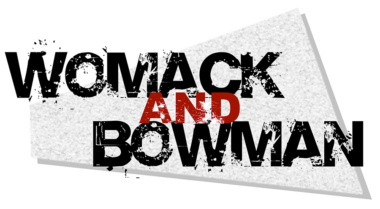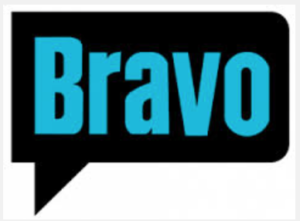As an aerialist there is a good chance that you wake up most mornings experiencing some degree of muscle pain.
You may inch your way out of bed wincing, moaning and holding your lower back, shoulder, forearm or wrist.
Your partner probably shakes there head in disapproval of your masochistic ways while your cat hides under the sofa to avoid being a victim of your stumbling, pain-induced morning gait.

Massage, Chiropractic, Physical Therapy and Acupuncture are just some of the treatments available to help relieve muscle pain and soreness caused by excessive aerial training. Treatments can be costly however (though certainly necessary, particularly if you are dealing with an actual ‘injury’) which is why we prefer to partake in ‘self-massage’ techniques wherever possible.
Before beginning our aerial training routine here at Womack and Bowman we usually spend 10-15 minutes ‘rolling-out’ our sore, tired muscles (thanks yesterday’s training!) on a foam roller or tennis ball or the edge of a wall, counter or door knob (if we have forgotten our equipment!).
While Rachel was enjoying/enduring the glorious agony/ecstasy of this muscle release during a recent training session, she started wondering why this activity felt so good and if there were other simple techniques that she could use and share to decrease aerial related muscle pain.
First she needed to understand more about the ‘muscle knots’ that were causing her pain.
Paul Ingraham, a registered massage therapist and science writer from Vancouver says this:
“Muscle knots or “trigger points” are small patches of super-contracted muscle fibres that cause aching and stiffness. They can affect performance of the whole muscle, spread pain to adjacent areas, and even cause other trigger points. They seem to be a major (and often unsuspected) factor in many common pain problems like low back pain and neck pain. Most minor trigger points are self-treatable.”
Ok Paul, so what is the most effective way to self-treat these muscle knots?
“For an easy case, just a few moments of gentle rubbing can be enough. For moderate cases, several doses of rubbing over a couple days will usually do the trick. The toughest self-treatable cases might need an investment of about a half dozen miniature treatments per day for a week, each about 20–30 kneading strokes. That will take care of most trigger points.”
What should we rub our trigger points with?
“Rub the trigger point with your fingertips, thumbs, fist, elbow … whatever feels easiest and most comfortable to you. Simple tools are really handy for spots that are harder to reach. And I don’t mean specialized massaging tools — just a tennis ball, or other handy household objects.”
Rub in what way?
“For simplicity, either simply press on the trigger point directly and hold for a while (10–100 seconds), or apply small kneading strokes, either circular or back and forth, and don’t worry about the direction of the muscle fibres. Really, anything goes. But, if you happen to know the direction of the muscle fibres — sometimes it’s obvious — then stroke parallel to the fibres as though you are trying to elongate them, because it might be more effective.”
How hard should we rub?
“This matters much more. Because massage is a “conversation with your nervous system,” you want it to have the right tone. The intensity of the treatment should be Goldilocks just-right: strong enough to satisfy, but easy to live with. On a scale of 10 — where 1 is painless and 10 is intolerable — please aim for the 4–7 range, and err on the side of gentle at first.”
What should it feel like?
“Pressure on a muscle knot should generally be clear and strong and satisfying; it should have a relieving, welcome quality. This is “good pain.”
Rub where?
“For basic self-treatment, you can trust your instincts: rub where it hurts! Do explore for sensitive spots, but you can limit your exploration to a fairly small area of muscle tissue around the “epicentre” of your symptoms. So, for instance, if the top of your shoulder aches, search for trigger points mainly in the top of your shoulder. You will not necessarily be able to feel a bump or “knot” in your muscle, so don’t worry too much about that.”
Rub how much?
“Massage each suspected trigger point for about 30 seconds. This is actually enough for many trigger points — especially if you think that you have several that all need attention! Five minutes is roughly the maximum that any trigger point will need at one time, but there is not really any limit — if rubbing the trigger point continues to feel good, you should certainly feel free to keep going.”
Rub how often?
“As long as you aren’t experiencing any negative reactions, you should massage a key trigger point at least once per day, and as often as a half dozen times per day.The goal of self-massage for trigger points is to achieve a “release” (which) is a vague term. It is more poetry than anything else: it has no specific scientific definition. It means “the trigger point goes away.” Maybe it refers to the literal relaxation of the tightly contracted sarcomeres that the trigger point could possibly be made of. Unfortunately, a release may not be obvious. In fact, perhaps the tissue even remains a bit “polluted” with waste metabolites even after a successful release. Release might actually involve (or even require) some damage to the tissue of the muscle knots — that is one theory. This means that the area could still be sensitive even if you’ve succeeded. For beginners, don’t worry about the details: trust that you probably achieved a release, or a partial release, and then wait for the trigger point to calm down. Over the next several hours, if you were successful, you will notice a distinct reduction in symptoms — mission accomplished. (Often success is most obvious the next morning.)”
There you have it friend, an in-depth look at why it feels so darn good to rub your shoulder blade into that door frame the day after a hard training. Just remember, be gentle (ish) and if the pain persists or gets worse, be sure to visit a certified professional.
Have a great rest of your week!







